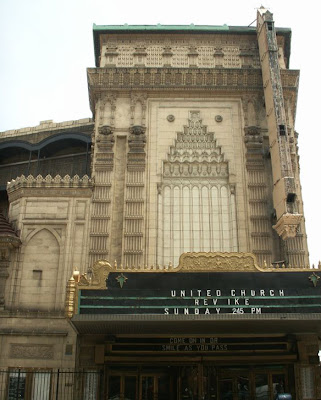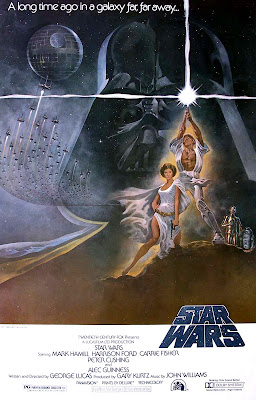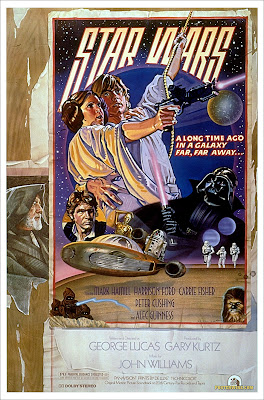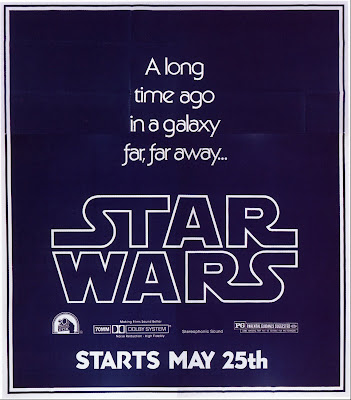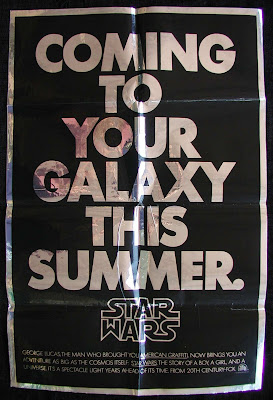

On the Internet, you should mark your trail with bread crumbs, which wouldn’t work in the catacombs of Paris (all those hungry rats...). Here is my trail of crumbs leading from a Wikipedia “Did you know...” article which caught my eye yesterday, to today’s rather unusual featured Movie Palace:
a) The Covering of the Senne River and urban renewal in 19th Century Brussels. Which links to Wiki’s entry on
b) Haussmann's renovation of Paris which in turn reminded me of the
c) Paris catacombs. Which in turn linked to
d) this item, which is the coolest thing I‘ve discovered on the Internet this year bar none. A mysterious, clandestine cinema in the bowels of Paris, complete with bar, kitchen (couscous only), plumbing, electricity and closed-circuit TV to watch for ze copairs. The cinematheque of my dreams. And ze copairs returned the next day only to find the space abandoned, hastily emptied except for a note which read “DON’T TRY TO FIND US.”
The secret cinephiles turn out to be a group of urban explorers known as La Mexicaine De Perforation (The Mexican Perforation). Further Googling turned up a little more information on the Perfs and their cinema lair. Much of the Parisian Catacombs was carved out of limestone, a Roman-era quarry for the foundations of Paris itself. The location of the Perfs’ cinema was choice, and quite deliberate: a subterranean chamber mere meters from the legendary “above-ground” palace of French cinema, La Cinémathèque Française which is itself also built on the foundations of le Palais de Chaillot. This was pointed out by filmaker and Perf spokesman Lazar Kunstmann in a 2004 interview with Greg of greg.org.
For all their resourcefulness, secrecy and flouting of authority, La Mexicaine De Perforation seem to be no more subversive or dangerous to society at large than your average nihilistic film nuts, judging from their film programs, which Greg posts here. Naturally they show a preference for films about the hidden, clandestine and subterranean. Good stuff, with enough obscure selections to keep me Googling for some time (1996's Moebius by director Gustavo Mosquera sounds particularly intriguing — a cross between The Taking of Pelham 1-2-3 and Aronofsky's π — and currently unavailable in the U.S. in any format). Since the the posted programs only cover their 2003 and 2004 “seasons” (2004's “Urbex Movie” series was interrupted by the police raid), I wonder whether they had ever previously had the chance to screen the 1935James Whale horror classic Bride of Frankenstein. The dinner scene between the Monster and the sinister Dr. Praetorius in the underground crypt would have been pitch perfect for the skeleton-jammed Parisisan catacombs:
Dr. Pretorius: Do you know who Henry Frankenstein is, and who you are?
The Monster: Yes, I know. Made me from dead. I love dead... hate living.
Dr. Pretorius (peering happily around at the skulls and bones): You are wise in your generation. We must have a long talk, and then I have an important call to make.
PHOTO CAPTIONS/CREDITS
Top: Bones from the old Magdeleine Cemetery deposited in the Catacombs in 1859 (Wikipedia)
Bottom: possible image of Les Arènes de Chaillot cinema (thanks to willamina at Stars in the Gutter. Originally found at Answers.com, though, oddly, not at Wikipedia)




